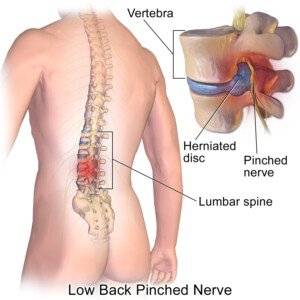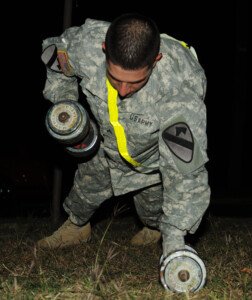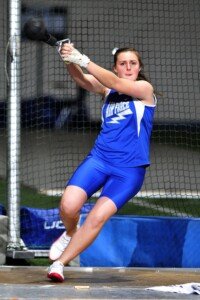Even young athletes can suffer from a herniated disc; it’s not just for older couch potatoes.
Charles Park, MD, neurosurgeon, Director of The Minimally Invasive Brain and Spine Center at Mercy Medical Center in Baltimore, says that the “Disc is composed of two parts: inner soft nucleus pulposus and outer tough annulus.
“Because of the tremendous amount of pressure that young athletes put on their bodies, the pressure may be overwhelming and may tear the outer layer, and some of the inner material can herniate out and put pressure on the nerve.”
Being that most young athletes don’t develop this, what predisposing factors are present that would put the young athlete at higher risk of a herniated disc?

BruceBlaus/CreativeCommons
Dr. Park explains, “A lot depends on genetics, which we can’t do anything about. Some are born with weak annulus, which is more predisposed to rupturing.
“But also, doing a lot of heavy axial-loading kind of activities, such as squatting, will put a lot of pressure on the annulus.”
What kind of exercises can help reduce the risk of a young athlete developing a herniated disc?
Dr. Park says that “core strengthening exercises will lower the risk.”
What are some very effective exercises for strengthening the core?
The core is the group of muscles in the abdominal and lower back regions that act as stabilizers to the spine.
A thousand sit-ups a day is not the path to a strong core. Spending an hour a day on the floor doing leg lifts, leg swings, crunches, etc., is not the answer.
The best core strengthening exercises include:
- pushup
- pushup dumbbell row
- deadlift and back squat
- chin-up
- pull-up
- lat pull-down
- bent-over barbell row
- bent-over dumbbell row.

Planking, too, will strengthen the core. Freepik.com

Pushup dumbbell row
To help protect your spine from developing a herniated disc, young or old, you should do these exercises, and your primary consideration should be perfect form.













